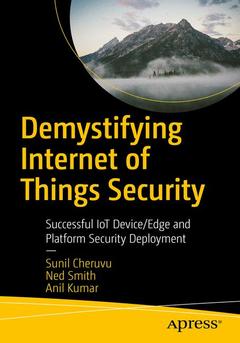Description
Demystifying Internet of Things Security, 1st ed.
Successful IoT Device/Edge and Platform Security Deployment
Authors: Cheruvu Sunil, Kumar Anil, Smith Ned, Wheeler David M.
Language: English
Subject for Demystifying Internet of Things Security:
Approximative price 36.91 €
In Print (Delivery period: 15 days).
Add to cart488 p. · 15.5x23.5 cm · Paperback
Description
/li>Contents
/li>Biography
/li>Comment
/li>
- Secure devices, immunizing them against different threats originating from inside and outside the network
- Gather an overview of the different security building blocks available in Intel Architecture (IA) based IoT platforms
- Understand the threat pyramid, secure boot, chain of trust, and the software stack leading up to defense-in-depth
Gain an understanding of the wired and wireless connectivity technologies for IoT and the associated security requirements
Learn the different security, regulatory, and industry standard body requirements needed for each IoT vertical
Understand the implications of security software on IoT systems as it relates to key management / lifecycle, software and firmware update processes, trusted execution environments, and cloud computing environments




